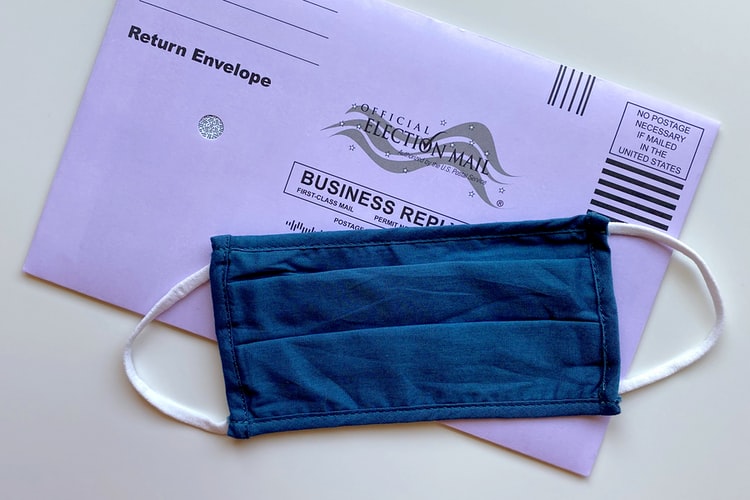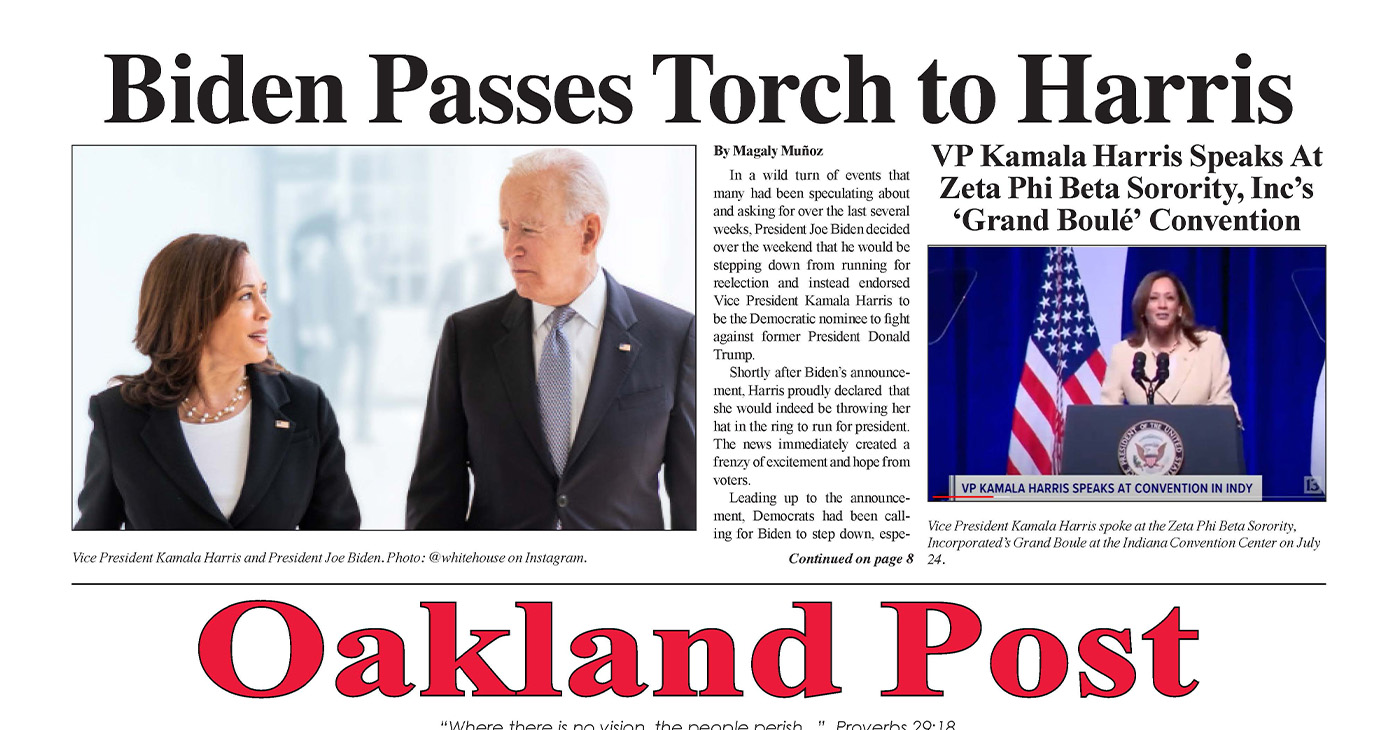Bay Area
As They Head to Runoff, District 18 Candidates Tout Policies Housing, Wages
Assembly District 18 includes most of Oakland, San Leandro and Alameda. About 65% of voters there are Democrat, according to the Public Policy Institute of California. It is one of the largest bases of liberal voters in the state. Bonta and Ramachandran are both Democrats.

From a pool of nine candidates, Mia Bonta and Janani Ramachandran emerged as the two frontrunners in a special election held June 29 for the seat representing California’s 18th Assembly District.
A run-off election has been set for August 31.
Bonta, an Alameda Unified School District School Board member, and social justice attorney Ramachandran will vie against each other to fill the seat vacated by Bonta’s husband, Rob Bonta when Gov. Gavin Newsom appointed him the state’s 34th Attorney General in March.
In last week’s poll, neither candidate reached the 50%-plus majority threshold to stave-off a runoff. As of July 3, Bonta had 22,551 votes (38.2%) while Ramachandran, in a distant second-place position had 14, 030 votes (23.7%).
“I’m honored and humbled by the outpouring of support from the diverse coalition we built over the course of this primary campaign,” Bonta said after preliminary results showed that she was leading Ramachandran by 40%.
“While we did not reach the 50% threshold tonight, momentum is on our side and I know we are ready to continue reaching out to earn every single vote to win in August,” she added.
Ramachandran also expressed her gratitude to supporters.
“Thank you for believing that our grassroots movement for justice is winnable, because fearless, progressive change is what our district wants and deserves,” said Ramachandran. “You helped us stun the political experts who didn’t see our grassroots surge coming. Naysayers who didn’t believe in the strength of people-powered movements.”
California Secretary of State Dr. Shirley Weber’s office will certify special election results for Assembly District 18 on July 8.
Malia Vella is currently in third place with 10,049 votes (17.0%), the last candidate in the double-digit range.
Assembly District 18 includes most of Oakland, San Leandro and Alameda. About 65% of voters there are Democrat, according to the Public Policy Institute of California. It is one of the largest bases of liberal voters in the state. Bonta and Ramachandran are both Democrats.
Depending on the results August 31, Bonta, who is Afro-Latina, could join the California Legislative Black Caucus (CLBC) as the group’s 11th member.
Bonta would also be the CLBC’s first member from the Bay Area since Sandré Swanson served in the Assembly. Swanson, who represented the 16th Assembly District from 2006 to 2012, was also former Deputy Mayor of Oakland and served as chief of staff to U.S. Congresswoman Barbara Lee (D-CA-13).
Bonta was elected to the Alameda Unified School District School Board in 2018 and currently serves as board president. She has been endorsed by Lee; California’s junior U.S. Sen. Alex Padilla; California Treasurer Fiona Ma; Secretary of State Shirley Weber; the California Teachers Association; Service Employees International Union (SEIU) California; and Equality California.
Bonta’s campaign message rests on three key pillars: housing, education, and addressing homelessness.
“I will work to secure funding for local homelessness programs in the East Bay and push for the wraparound services it takes to lift our unhoused neighbors out of poverty,” Bonta stated.
Ramachandran’s political platform includes providing affordable housing, addressing “extreme climate events,” and raising California’s wages to $22 per hour, she said.
According to Minimum-wage.org, a website that tracks minimum hourly rates around the country, California’s state minimum wage is $13.00 per hour, which is greater than the federal minimum wage of $7.25.
The California minimum wage was last changed in 2008, when it was raised $5.00 from $8.00 to $13.00.
The current minimum per-hour wage for employers in California with 26 or more employees is $14.00, Minimum-wage.org reported.
“I will fight to raise the minimum wage in California to $22 per hour by 2022 – with a dedicated plan to support small businesses. Living wages will lift millions of California families out of poverty while strengthening our economy,” Ramachandran said.
Activism
Oakland Post: Week of July 24 – 30, 2024
The printed Weekly Edition of the Oakland Post: Week of July 24 – 30, 2024

To enlarge your view of this issue, use the slider, magnifying glass icon or full page icon in the lower right corner of the browser window. ![]()
Activism
Oakland Post: Week of July 17 -23, 2024
The printed Weekly Edition of the Oakland Post: Week of July 17 -23, 2024

To enlarge your view of this issue, use the slider, magnifying glass icon or full page icon in the lower right corner of the browser window. ![]()
Bay Area
Op-Ed Senate Bill 966 Threatens Health Equity in East Bay
My East Bay community is struggling to get by. A proposed State Senate bill would set us back even further. Serving the East Bay community has been my life’s work and my greatest joy. After leaving the Bay Area to complete my seminary, I returned home to found The Community Church in Oakland. From the outset of my time as the church’s pastor, I have been guided by the belief that my service must extend beyond the pulpit, because the health and economic needs of my community are so great. Our church has organized free food banks, COVID-19 testing clinics, and a housing and re-entry program for those suffering from addiction.

By Rev. Dr. Lawrence E. VanHook
Special to the Post
My East Bay community is struggling to get by. A proposed State Senate bill would set us back even further.
Serving the East Bay community has been my life’s work and my greatest joy. After leaving the Bay Area to complete my seminary, I returned home to found The Community Church in Oakland.
From the outset of my time as the church’s pastor, I have been guided by the belief that my service must extend beyond the pulpit, because the health and economic needs of my community are so great. Our church has organized free food banks, COVID-19 testing clinics, and a housing and re-entry program for those suffering from addiction.
Through my service, I have seen the challenges that our community members are facing. Oakland, my hometown, has the third-highest rate of violent crime in the state. The local economy is strained. Oakland-based businesses are leaving our community because they’re struggling to get ahead.
Both East and West Oakland has disproportionately high rates of respiratory illness due to heavy air pollution. While our local efforts have brought some aid to those in need, we are also counting on our state elected officials to help us address the systemic health disparities afflicting the community.
Chief among the health concerns of community members is having reliable and affordable access to prescription drugs. Equitable access to medications gives us the peace of mind that we can keep ourselves and our families healthy and safe. Our community should not have to choose between paying rent or purchasing prescriptions.
Unfortunately, rather than taking action to combat soaring prescription drug prices, some California lawmakers are pushing legislation that could raise patient costs at the pharmacy counter.
The Legislature is currently considering SB 966, a bill backed by special interests that would undercut the few tools we have to keep prescription drug costs contained, letting big drug companies increase their prices, profiting on the backs of working families – some of whom already live paycheck to paycheck.
SB 966 would target the fundamental programs through which small businesses, unions, and government health programs are able to offer their employees and members quality and affordable healthcare. Millions of Californians rely on these plans to obtain essential medications at the lowest-possible cost.
The bill would make it illegal for employers and unions to incentivize the administrators of their prescription drug plans to negotiate for the lowest possible cost for prescriptions. Right now, small businesses and unions can choose to pay these administrators more for taking on big drug companies and securing discounts – a choice that will be outlawed under this bill.
As a result, employers will have no leverage to stop big drug companies from setting sky-high prices, disproportionately impacting working families.
As these health costs quickly add up, employers will have little choice but to pass the increases down to their employees. That means California patients will see higher healthcare costs and co-pays.
From my perspective, most concerning is that the bill would exacerbate the health disparities impacting my community and other underserved populations. If SB 966 becomes law, the most vulnerable may be forced to skip prescription doses, stop filling their prescriptions, and avoid essential care.
By rejecting this cash grab by big drug companies, our state elected officials can send a clear message that they stand with the community, patients, and working families.
We cannot afford SB 966.
Rev. Dr. VanHook is the founder and pastor of The Community Church in Oakland and the founder of The Charis House, a re-entry facility for men recovering from alcohol and drug abuse.
-

 Arts and Culture3 weeks ago
Arts and Culture3 weeks agoRooted in Tradition: The Intricate History of Black Hair Braiding
-

 Bay Area4 weeks ago
Bay Area4 weeks ago“I Will Not Be Bullied,” Says Oakland Mayor Sheng Thao
-

 Bay Area2 weeks ago
Bay Area2 weeks agoPG&E Increases Rates While Bay Area Households Are Struggling to Stay Afloat
-

 Business3 weeks ago
Business3 weeks agoGov Newsom: Raising Fast Food Minimum Wage to $20 Pays Off as Jobs Multiply in Industry
-

 Activism4 weeks ago
Activism4 weeks agoOpponents of Mayor Sheng Thao Are Calling on Her to Resign Following FBI Raid
-

 Community1 week ago
Community1 week agoHundreds Come to Jehovah’s Witnesses’ Assembly Hall for Three-Day Program of ‘Good News’ in Fremont
-

 Bay Area2 weeks ago
Bay Area2 weeks agoJuneteenth Mass Shooting Suspect Charge with Multiple Counts of Felony Assault by Alameda County DA Pamela Price
-

 Activism4 weeks ago
Activism4 weeks agoOakland Coliseum Sale to AASEG: A Model for Community Development and Inclusion
















































